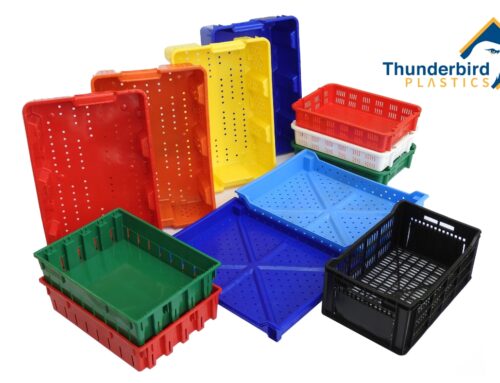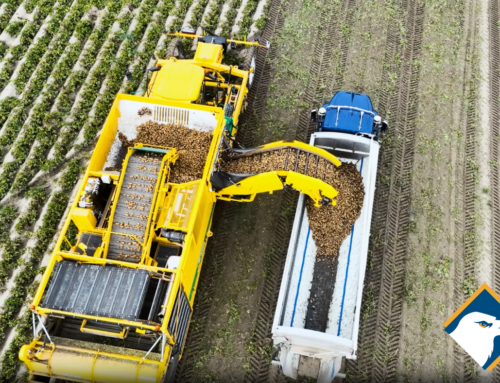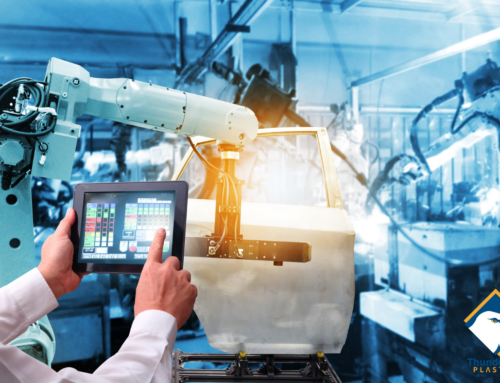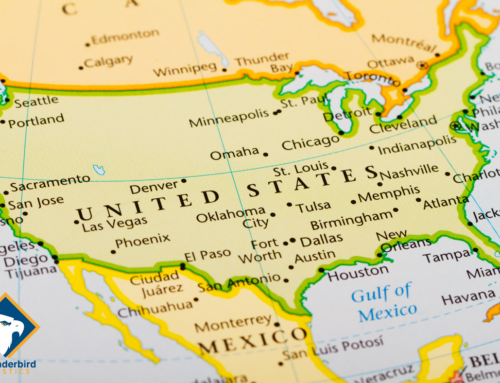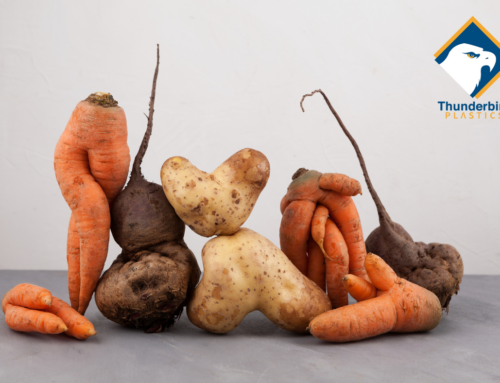Feeding Humanity Smarter: How Greenhouse Farming and Automation Are Changing Canadian Agriculture
Canadian greenhouse agriculture has been exploding in recent decades. Statistics Canada reports that the value of the greenhouse vegetable industry alone in 2023 was $2.5 billion, a 9.2% increase from the previous year [1]. In 2006, greenhouse farming covered 869 hectares nationally, but in 2023, the acreage taken up by greenhouse farming was 5,500 hectares nationwide [1, 2].  This rapid expansion over 17 years is still growing year by year across the country. As operating expenses rise, labor needs increase, climate becomes more variable, and North American tariffs loom, greenhouse farming offers a controllable and high-yield solution. Paired with automation and the resulting process optimization, it is clear why Canadian greenhouse agriculture is booming.
This rapid expansion over 17 years is still growing year by year across the country. As operating expenses rise, labor needs increase, climate becomes more variable, and North American tariffs loom, greenhouse farming offers a controllable and high-yield solution. Paired with automation and the resulting process optimization, it is clear why Canadian greenhouse agriculture is booming.
Why The Greenhouse Agriculture Industry Is Booming
Canadian government initiatives that help fund greenhouse agriculture, like the Sustainable Canadian Agricultural Partnership and the AgriInnovate Program, show that our nation’s leaders believe this industry is crucial for a sustainable and strong economy [3, 4]. These initiatives focus on helping the Canadian agricultural sector adopt new technologies and innovations to increase output, remain competitive in the market, and protect the environment [4]. This sector needs to be agile in the current political climate, unpredictable environmental factors, and the growing demand for sustainable, local produce. Canadian greenhouse farming allows the economy to remain independent of the international supply chains that may be further fractured by the upcoming American tariffs. The controlled environment of a greenhouse allows for crops to be grown locally year-round with less water and less land, as concerns about food security and support for local businesses grow.
The Technology Behind the Automation of Greenhouse Farms
Automation and data-driven processes allow large-scale operations to lower waste output, increase yields, and optimize resource allocation. In a highly controlled setting, automated machinery can work predictably and precisely without interruptions. This allows for a consistent output of produce year-round, which would otherwise only be available at certain points of the year and in quantities that would otherwise be subject to environmental factors.
and data-driven processes allow large-scale operations to lower waste output, increase yields, and optimize resource allocation. In a highly controlled setting, automated machinery can work predictably and precisely without interruptions. This allows for a consistent output of produce year-round, which would otherwise only be available at certain points of the year and in quantities that would otherwise be subject to environmental factors.
 In Canadian greenhouses, robotic harvesters, automated climate control, and automated nutrient delivery systems are common [5]. Robotic harvesting machines are particularly efficient in handling delicate produce. Delicate crops like cucumbers, tomatoes, and peppers are most commonly grown in Canadian greenhouses because the demand is steady and reliable, and the process is incredibly optimized. In a greenhouse environment with an automated nutrient delivery system and climate control, harvest can be 10-20 times greater in an acre of land than from an acre of open field [6].
In Canadian greenhouses, robotic harvesters, automated climate control, and automated nutrient delivery systems are common [5]. Robotic harvesting machines are particularly efficient in handling delicate produce. Delicate crops like cucumbers, tomatoes, and peppers are most commonly grown in Canadian greenhouses because the demand is steady and reliable, and the process is incredibly optimized. In a greenhouse environment with an automated nutrient delivery system and climate control, harvest can be 10-20 times greater in an acre of land than from an acre of open field [6].
Local Food, Strong Economy
 Large-scale greenhouse production makes local food profitable while contributing to the local economy through job creation. On either side of the US-Canada border, economies can become self-reliant should supply chains become interrupted. Fragile produce that is grown locally is fresher, of better quality, and yields less waste. The increased profitability of these items contributes to local economies while keeping the locals employed.
Large-scale greenhouse production makes local food profitable while contributing to the local economy through job creation. On either side of the US-Canada border, economies can become self-reliant should supply chains become interrupted. Fragile produce that is grown locally is fresher, of better quality, and yields less waste. The increased profitability of these items contributes to local economies while keeping the locals employed.
Thunderbird Plastics’ Agricultural Harvesting Crates, Bins, and Totes for Automation

At Thunderbird Plastics, we further support farmers employing mechanized and automated machinery by offering our custom injection moulding services. Our engineers are able to work with clients first to create a 3D digital design and a prototype, and then bring the product to mass production. Call us today at 888.77T.BIRD or email us at info@thunderbirdplastics.com.
References
Statistics Canada. (2024, April 25). Canadian agriculture continues to grow with strong investment in 2023. https://www150.statcan.gc.ca/n1/daily-quotidien/240425/dq240425b-eng.htm
The Grower. (n.d.). Green-lighting Canadian agricultural growth. https://thegrower.org/news/green-lighting-canadian-agricultural-growth
Agriculture and Agri-Food Canada. (n.d.). Sustainable Canadian Agricultural Partnership. https://agriculture.canada.ca/en/department/initiatives/sustainable-canadian-agricultural-partnership
Agriculture and Agri-Food Canada. (2018). An overview of the Canadian agriculture and agri-food system 2018 (Cat. No. A22-604/2018E-PDF). https://publications.gc.ca/collections/collection_2018/aac-aafc/A22-604-2018-eng.pdf
Farmonaut. (n.d.). Greenhouse technology: 7 ways to boost sustainable farming. https://farmonaut.com/canada/greenhouse-technology-7-ways-to-boost-sustainable-farming
Charles, D. (2016, June 16). How Canada became a greenhouse superpower. NPR. https://www.npr.org/sections/thesalt/2016/06/16/473526920/how-canada-became-a-greenhouse-superpower


